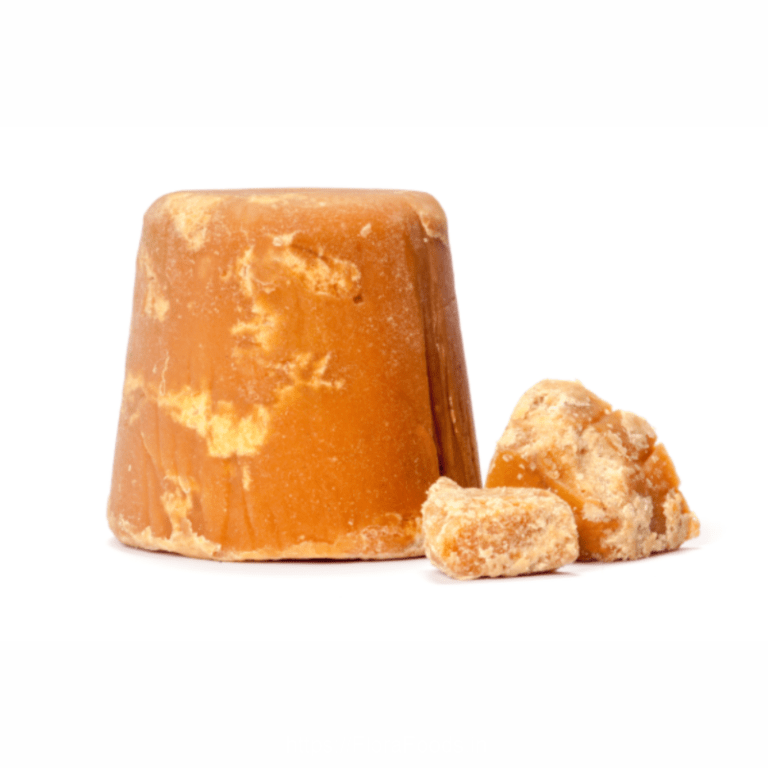Jaggery vs. Sugar: The Ultimate Health Showdown – Why Unrefined Gur is Better

We all love a little sweetness in our lives. But if you’re trying to eat healthier, that little scoop of white sugar in your morning coffee can start to feel like a huge question mark.For decades, refined white sugar has been the default. It’s cheap, it’s easy, and it’s purely, aggressively sweet.Lately, though, a traditional hero is making a comeback: Jaggery (or Gur).You’ve seen it—those golden-brown blocks that look rustic and smell faintly of molasses. It’s been a staple in South Asian kitchens for centuries, celebrated in Ayurveda for its health properties.But is jaggery really better for you, or is it just another sugar swap with fancy marketing? We’re cutting through the noise to compare them head-to-head.
Round 1: How They’re Made
(The Processing Problem)The biggest difference between these two sweeteners comes down to how much—or how little—we mess with them.
The Story of Refined White Sugar
Think of white sugar as a supermodel: polished, filtered, and stripped down until it’s perfectly uniform.Sugar starts as sugarcane juice, but from there, it goes through an intense industrial cleanup. It’s boiled, clarified with chemicals, filtered, and spun to completely separate out the molasses.And here’s the kicker: molasses is where all the good stuff lives. By removing it, we’re left with pure sucrose—99.9% sweet, yes, but nutritionally empty. That’s why dietitians call it “empty calories.” It gives you a quick spike of energy, then nothing.
The Story of Jaggery (Gur)
Jaggery is the opposite. It’s the wholesome, rustic farmer of the sweetener world.It also starts as sugarcane juice (or palm sap), but the process is far simpler. The juice is boiled slowly and patiently until it thickens into a dense paste. Then, it’s poured into moulds to cool and solidify. That’s it!Because the molasses is kept in, jaggery retains a wealth of the original plant’s nutrients, which gives it that distinct, rich, earthy, and sometimes caramel-like flavour.
Round 2: Nutritional Knockout
This is where jaggery wins by a landslide.Let’s be clear: when comparing calories, they are almost identical (around 383-387 calories per 100 grams). If you use a massive amount of jaggery, you’ll get the same number of calories as if you used sugar.However, the quality of those calories is fundamentally different.
| Essential Nutrient (per 100g) | Refined White Sugar | Jaggery (Gur) | What the Gur Delivers |
| Iron | ∼0.1 mg | Up to 11 mg | Helps fight fatigue and prevent anemia. |
| Potassium | ∼2 mg | Up to 1050 mg | Crucial for balancing electrolytes and regulating blood pressure. |
| Magnesium | ∼0 mg | Up to 90 mg | Supports nerve function and strong bones. |
| Antioxidants | None | High levels | Compounds that help your body fight cell damage and chronic disease. |
When you swap refined sugar for high-quality, sulphur-free jaggery, you aren’t just getting sweetness; you’re getting a small but meaningful boost of essential micronutrients. It’s a slightly more complex, wholesome food, not just a chemical addition.
Round 3: The Blood Sugar Question (A Dose of Reality)
This is the most common question we get: Is jaggery safe for diabetics?The truth is nuanced, and it’s important to stay grounded in reality.The Glycemic Index (GI) measures how fast a food spikes your blood sugar.
- Refined Sugar has a high GI (≈65), causing an immediate rush followed by a crash.
- Jaggery has a slightly lower GI. Because of its complex composition and trace fiber, it releases glucose more slowly and steadily into the bloodstream. This means you get sustained energy without the drastic spike.
The Moderation Mandate
It bears repeating: Jaggery is still sugar. Its main component is sucrose.While the minerals are a huge benefit, the calories and high sugar content remain. If you have diabetes or insulin resistance, you must consult your doctor before changing your diet. And critically, you should consume both refined sugar and jaggery in strict moderation.The benefit of jaggery isn’t that you can eat unlimited amounts; the benefit is that when you do use a sweetener, you choose the one that offers wholesome nourishment instead of empty calories.
Round 4: Jaggery’s Ancient Wisdom
Beyond the nutritional facts, jaggery has been valued for centuries for its unique therapeutic role in everyday health:
- A Natural Digestive: It’s a common practice across India to eat a small piece of jaggery after a heavy meal. It’s believed to activate digestive enzymes, helping to gently cleanse the liver and promote healthy gut function.
- Respiratory Relief: If you have a cough or a cold, jaggery is often used as a home remedy. It’s thought to have a warming effect and can help clear mucus from the respiratory system.
- Energy and Iron: For those susceptible to anemia, the natural iron content in jaggery is highly beneficial, helping to boost hemoglobin levels and maintain sustained energy throughout the day.
The Final Verdict: Why Jaggery Takes the Crown
In the battle for the better sweetener, Jaggery is the clear health winner.Refined sugar is a sterile product that only contributes to energy spikes and crashes. Jaggery is a robust, unrefined food that works with your body, offering trace minerals and a slower energy release.Our advice is simple:
- Make the Upgrade: Wherever you currently use white sugar—in your tea, in baking, or in smoothies—swap it out for an equal or slightly lesser amount of quality jaggery, like Devamrut Jaggery Powder.
- Keep it Real: Treat jaggery just like any other sweetener: enjoy it, but remember that moderation is the ultimate key to a healthy lifestyle.
Ready to introduce wholesome, natural sweetness into your kitchen?Explore our range of 100% Natural Jaggery Products, including our specialized Jaggery Tea Blends and convenient Jaggery Syrup (Kakavi), and taste the difference that minimal processing makes.

